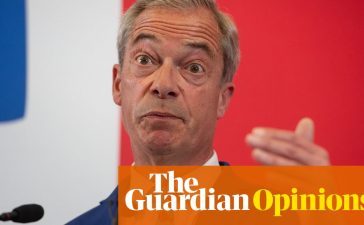Raising money on Wall Street has become cheaper and easier despite the Federal Reserve lifting interest rates to the highest level in 15 years, suggesting an ongoing and deep disconnect between investors and central bank officials.
Measures of financial conditions — the ease with which companies can access funding — have tumbled in recent months, with one closely watched index returning to the level it was at shortly after the Fed started raising rates last March.
The divergence has led some investors to caution that the Fed faces a serious communications challenge that could threaten its efforts to keep inflation under control. However, with Fed chair Jay Powell declining two opportunities over the past week to push back on the market exuberance, others are taking his silence as a sign of the central bank’s growing confidence that it is winning its battle to tame inflation.
“The Fed just doesn’t care anymore,” said Greg Whiteley, a portfolio manager at DoubleLine Capital. “[They believe] they have the tools to bring inflation back to 2 per cent without having the co-operation of the market.”
The Goldman Sachs US Financial Conditions index touched its lowest level since August after the Fed raised rates last week, while a weekly measure compiled by the Fed’s Chicago branch hit its lowest level since April.
The strong US labour market figures released on Friday threatened to derail the optimistic trend, with the faster-moving Goldman index moving marginally higher — indicating tighter conditions — as investors acknowledged that the Fed might make more than one additional rate rise. Even after the pullback, however, conditions are still close to their loosest since the summer.

Financial conditions offer insight into how the Fed’s monetary policy has filtered into the real world, and are therefore an important part of the central bank’s policymaking calculus. Easier financial conditions and lower Treasury yields can buoy inflation.
US large-cap stocks, the biggest contributor to the Goldman index, have recovered significantly in recent months. The S&P 500 has gained 15 per cent from its low in mid-October — the same week that financial conditions hit their tightest since March 2020, the start of the Covid-19 pandemic.
Another input is the spread between yields on junk bonds and US Treasuries — the premium that investors demand to hold riskier debt over risk-free government bonds. This has shrunk from 5.3 percentage points to less than 4 percentage points over the same period.
After four consecutive increases in interest rates of 0.75 percentage points, the Fed in November began to signal that it was prepared to slow the pace of its tightening. Since then, Fed officials have tried to walk a fine line, insisting that they plan to keep interest rates high for as long as it takes to bring inflation back down to the 2 per cent target, while also slowing the pace at which rates are raised.
The market has not bought the Fed’s story. Interest rate futures markets show that investors expect the central bank to cut rates as soon as the end of this year as inflation cools faster than forecast, although the predicted size of those cuts has been falling in recent days.
“The difference between market pricing and the Fed’s own forecasts is a difference in inflation expectations,” said Jay Barry, co-head of US rates strategy at JPMorgan, explaining that the market expects US inflation to come down faster than the central bank does.
Annual inflation has fallen from a peak of 9.1 per cent last June to 6.5 per cent in December. Meghan Swiber, US rates strategist at Bank of America, cautioned that loose conditions could make it harder to bring down price rises further. “All the cooling so far has come from goods and commodities,” she said. “The easing of financial conditions does make it harder to bring down the more cyclical elements” such as services, she added.
But inflation has fallen even as financial conditions have eased, which may help explain why the Fed has become more sanguine about looser financial conditions.
“I was surprised that Powell didn’t push back against the easing in financial conditions more,” said Matt Raskin, US head of rates research at Deutsche Bank. “But it is because of different expectations of how quickly inflation will fall. We’ve had some positive developments on inflation. Maybe it’s just hard not to have a slightly brighter tone against that backdrop.”
The last time the Goldman index fell this far, in August, Powell made an explicit intervention at the annual Jackson Hole summit to warn against conditions loosening too quickly. During last week’s press conference, however, he said he was not concerned by “short-term moves”.
On Tuesday, he reiterated that continued evidence of a booming labour market or persistent inflation could force the central bank to raise interest rates more than the market at present expected, but the lack of a sterner warning served to lift stocks and push expectations of rate increases lower.
“My sense is, the [Federal Open Market Committee] and Mr Powell are more comfortable that they’ve now done the heavy lifting,” said Jurrien Timmer, head of global macro strategy at Fidelity. “Six months ago, the Fed would have been concerned that if they didn’t say the right things, then the market would rally and inflation flames would keep getting fanned. Now we’re further along the cycle.”








